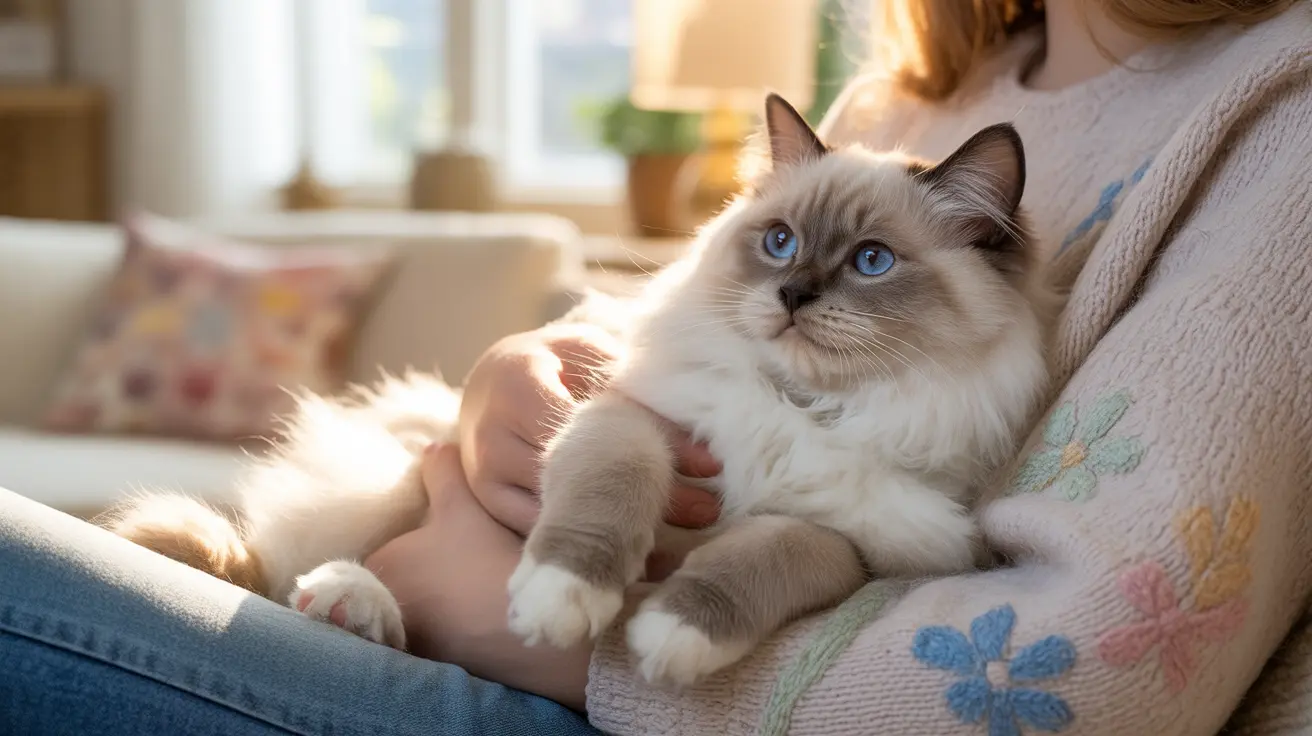The Science Behind Baby-Style Cat Holding
When a cat allows themselves to be held like a baby, they're displaying an extraordinary level of trust. In the wild, exposing their belly and throat would make them vulnerable to predators. For a domestic cat to willingly assume this position, they're demonstrating complete confidence in their human companion.
Research shows that cats who enjoy being held this way often experienced positive handling experiences during their critical socialization period as kittens, typically between 2-7 weeks of age. This early conditioning helps create positive associations with being handled in various positions.
Signs Your Cat Enjoys Being Held
Cats communicate their comfort level through distinct body language signals:
- Relaxed muscle tone
- Slow blinking or half-closed eyes
- Gentle purring
- Kneading motions with their paws
- Settled positioning without struggling
- Tail held loosely or wrapped around your arm
These indicators suggest your cat feels secure and content while being held. However, it's crucial to watch for any signs of distress or discomfort.
Building Trust Through Proper Handling
To encourage your cat to enjoy being held, follow these expert-recommended practices:
- Start with brief holding sessions
- Always support their entire body
- Use positive reinforcement with treats
- Let them initiate or end contact
- Maintain a calm, gentle demeanor
- Never force them into positions they resist
The Role of Breed and Personality
Some cat breeds are naturally more predisposed to enjoying close physical contact. Ragdolls, for instance, are famous for their tendency to go limp when held. However, individual personality often matters more than breed characteristics. Even within the same litter, some kittens may love being cradled while others prefer different forms of interaction.
Frequently Asked Questions
Why does my cat like to be held like a baby and what does it mean?
When your cat enjoys being held like a baby, it indicates a deep level of trust and security in your relationship. This position makes them vulnerable, so accepting it shows they feel completely safe with you.
How can I safely hold my cat in a way that makes them feel secure and comfortable?
Always support both their hindquarters and chest, keep their body close to yours, and avoid restricting their movement. Let them adjust their position naturally and be ready to release them when they show signs of wanting down.
Do all cats enjoy being cradled like a baby, or does it depend on their personality or breed?
Not all cats enjoy this position. While some breeds like Ragdolls are more accepting of it, individual personality, early socialization, and past experiences play bigger roles in determining whether a cat will enjoy being held this way.
What signs should I watch for to know if my cat is stressed or unhappy when being held?
Watch for signs like tail thrashing, ear flattening, muscle tension, growling, or attempts to escape. These indicate your cat is uncomfortable and should be released immediately.
How can early socialization affect a cat's willingness to be picked up and held gently?
Kittens who receive gentle, positive handling experiences during their early weeks of life (2-7 weeks) are more likely to enjoy being held as adults. This early socialization helps them form positive associations with human touch and various handling positions.
Final Thoughts
Whether your cat enjoys being held like a baby or prefers other forms of interaction, the key is respecting their individual preferences and boundaries. By understanding their body language and providing positive experiences, you can build a stronger bond with your feline friend based on mutual trust and comfort.






